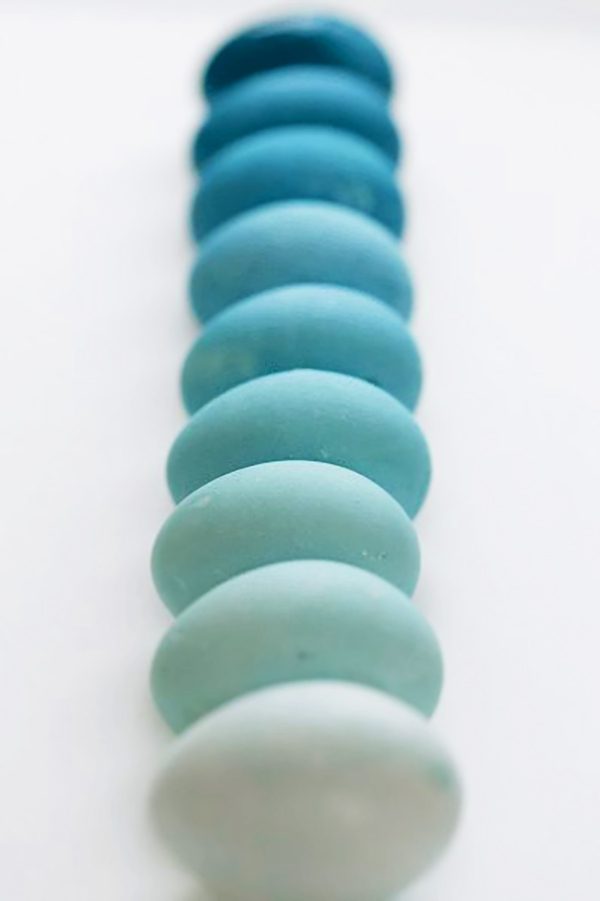Coloring eggs to celebrate spring and Easter is a great activity for the kids, but making natural egg dyes takes it to a new level! You don’t even need to have any youngsters in the house to try this. Call it a science experiment that results in edible art.
Fruits, vegetables, and dried spices can become natural egg dyes, leading to a rainbow of colors and some interesting results. For example, red cabbage turns eggs blue, and yellow onion skins give you red eggs.

Homemade vegetable dyes often create marbling, two-toned effects, even when submerging the egg into a single color.
You can also create gorgeous patterns with ferns, flowers, tape, and stickers.
There are so many different variations in recipes for natural egg dyes. Most people use nothing but food, spices, water, and vinegar. Others use vague amounts of water, salt, or no vinegar at all.
I fell in love with Ombre Eggs, a gradual range of blues from the palest robin egg to deep chambray. It transcends average natural egg dyes without getting too fussy or needing to prepare a rainbow of dye baths. Perfect.
Boil some cabbage and then carefully drop your eggs into the pot once the water has cooled.
The trick to getting the Ombre Eggs range of colors from a single pot of vegetable dye is time. Remove one egg an hour to achieve a big range of intensities. Start removing the eggs after the 2-hour mark.
The End Result
Resist blot-drying the eggs — color comes off on the paper towel.
In the end, I didn’t achieve the gradual deepening tones that Kaley-Anne did (shown on the left and the inspiration behind my project).
To get that super deep color, you have to leave the eggs in the dye overnight.
Since it’s not the same, I’ll call mine Denim Eggs, because that’s what they remind me of: well-loved, often worn, and super comfy denim.
For clearer colors, use white eggs – brown eggs antique the various hues. And yes, the eggs are safe to eat after dying!
Tammy’s Denim Egg Recipe
- 1 head Red Cabbage, coarsely chopped
- 4 quarts water ( feel free to use less)
- 4 tbsp white vinegar (feel free to adjust)
- 4 tbsp salt (adjustable too)
If you wish, have some foliage and flowers on hand (preferably chemical-free) to create graphic imprints.
If you’re going to eat the eggs, it’s far safer to use parsley, cilantro, and other fresh herbs from the grocery store. Edible flowers can also be found in the produce department at many grocery stores.
Give this experiment a try; it’s a lot more fun than dropping color tablets in coffee cups and getting cookie-cutter Easter eggs!
Here’s a variety of recipe and idea sources to make a rainbow of natural egg dyes, and even some snazzy patterns in a single color or two-color process:
- Flower & Leaf Patterns
- Baking Soda for True Blue?
- Different Blues
- Adding Stripes & Stickers
- Cooked-On Color & Marbling
- More Color Sources
- Natural Ombre Eggs
Last updated by Catherine Sherriffs on 2020/04/01
